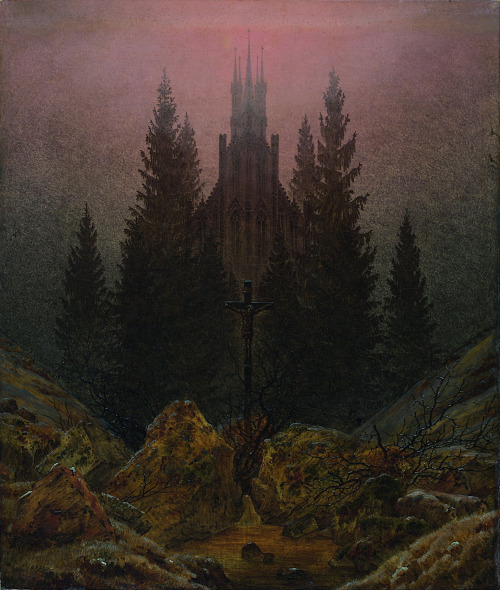
Caspar David Friedrich is known for depicting what the Metropolitan Museum of Art calls “communion with nature, which the Romantics saw as a manifestation of the Sublime.”
Unlike many landscape artists, however, his paintings were often overtly religious.
After one of his early paintings, the Getty tells us, “[s]hocked by his use of secular genre for a religious purpose, critics accused Friedrich of sacrilege. Friedrich’s oeuvre encompasses scenes of ruined Gothic churches, cemeteries, desolate landscapes, and silent figures in vast spaces, all deeply spiritual and often melancholy.”
There is indeed something wonderfully chilling in the peculiar geometric composition in Cross and Cathedral in the Mountains, from 1812, with the spires of the church continuing the line of the crucifix while the trees balance each other on either side.
The National Gallery in London writes of a work rather like this one that “[t]he rocks and evergreen trees may be interpreted as symbols of faith, and the visionary Gothic cathedral emerging from the mist evokes the promise of life after death.”
Here the sanguine-red glow of the mist-scattered sun reads more as a threat than a promise.












